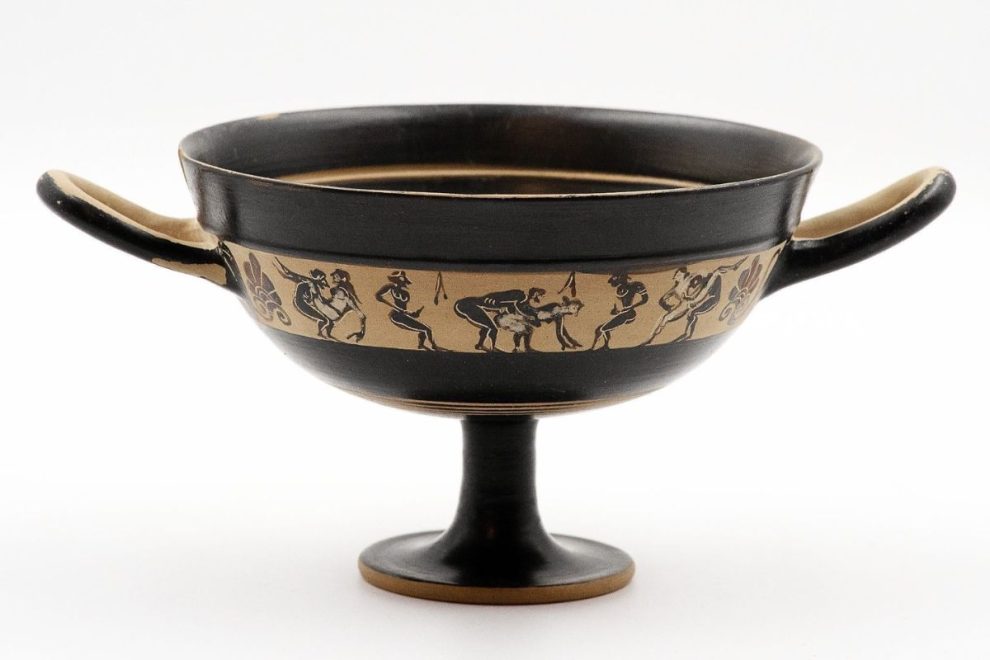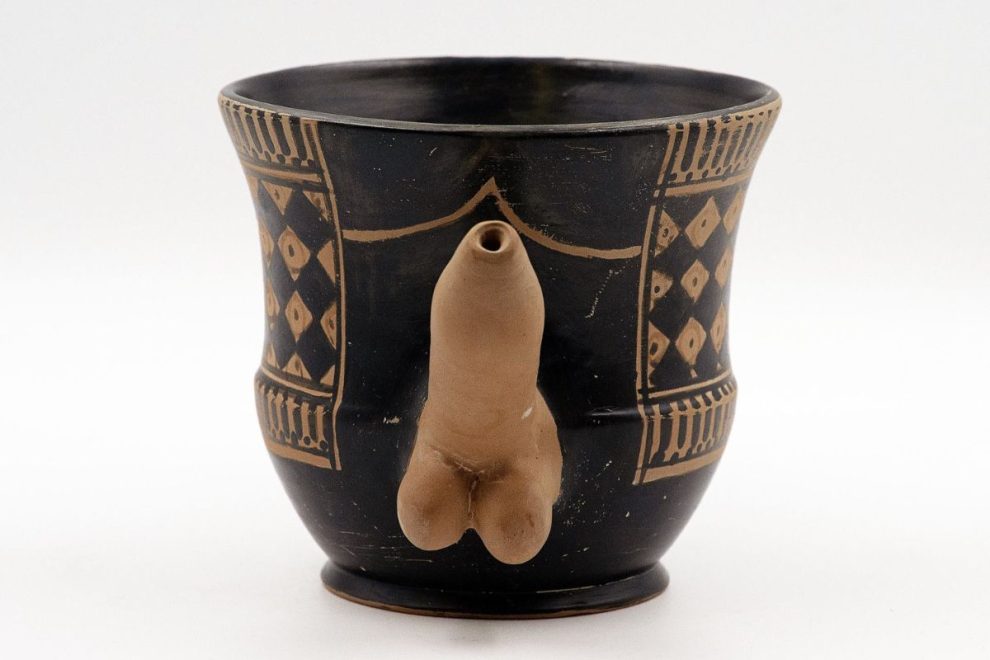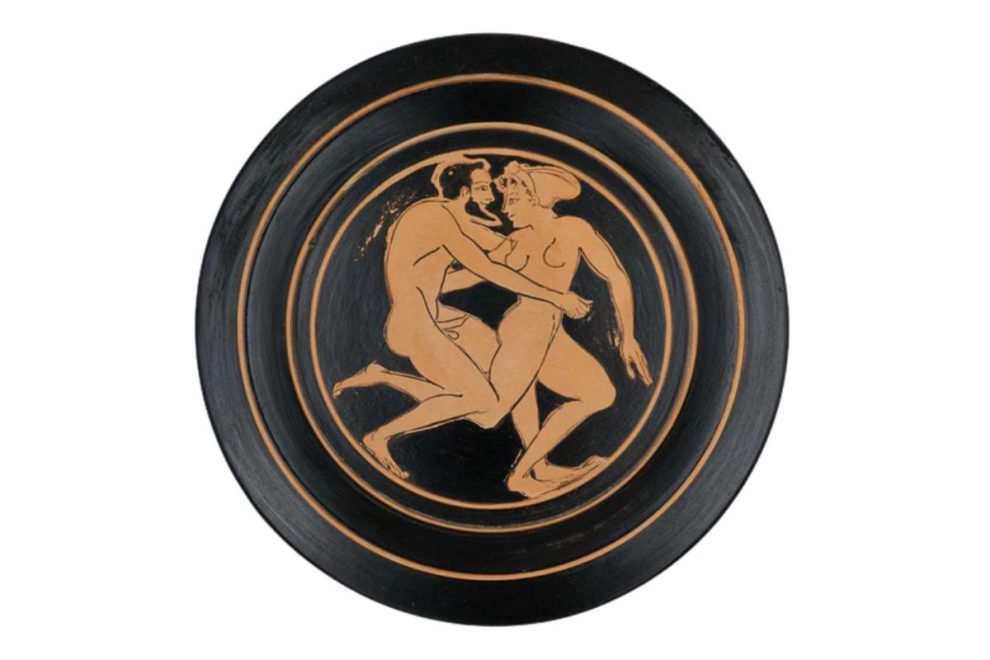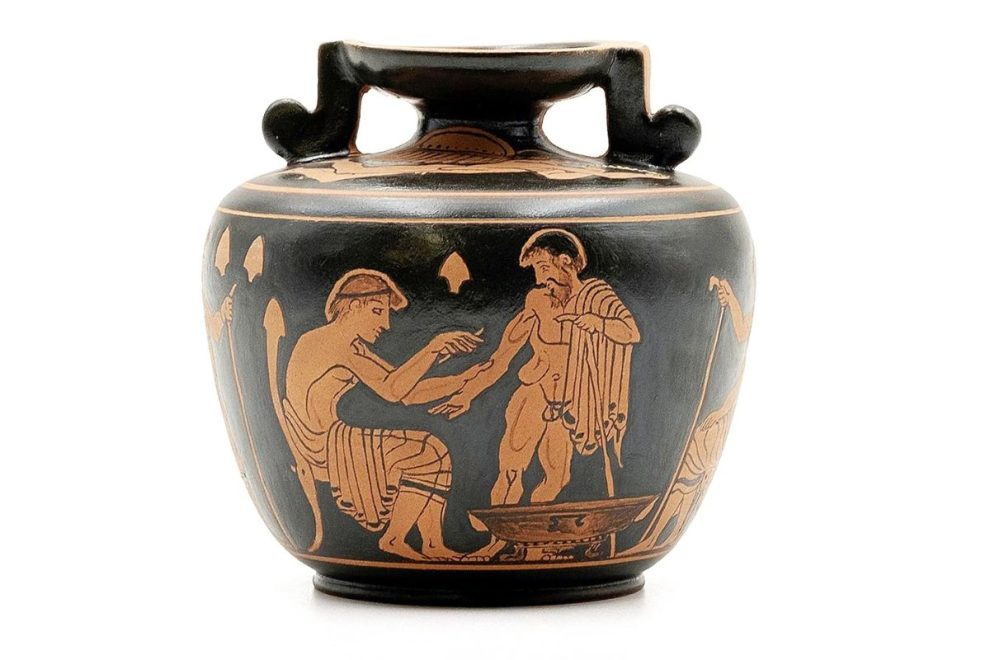
Homoerotic Greek Pottery offers insight into how ancient Greek society expressed relationships, values, and daily life through art.
Key Highlights
- Discover the intricate homoerotic imagery on ancient Greek pottery, showcasing relationships between men and women in ancient Greek society.
- Examine the traditions of pederasty and warrior culture that deeply influenced artistic representations of the time.
- Learn about the cultural differences in explicit sexual depictions between the cities of Athens and Sparta.
- Investigate recurring themes, symbolism, and stylistic techniques found on authentic ancient Greek vases.
- Explore locations in the United States where genuine pieces of homoerotic Greek pottery can be viewed safely.
Ancient Greek pottery is important for its cultural and artistic meaning. It helps us see the daily life and beliefs of people in ancient Greece. Many pieces show homoerotic images, which tell us about how people in that time saw friendship, love, and sexual orientation. Homoerotic Greek Pottery often shows traditions of pederasty and times when men met for drinking parties called symposiums. Ancient Greek pottery works as a way to record history. It also lets us look back into a world where Greek art mixed with everyday life and the values of those living in Greece.

Historical Context of Homoeroticism in Ancient Greece
In ancient Greece, relationships between members of the same sex had an important place in society. These were not just about sexual desire. They also acted as mentorship. They helped people build strong bonds and figure out their role in society. You can see these types of connections shown on ancient Greek pottery. These pieces give us a good look at their rules, values, and the way things worked at that time. Sexual orientation in ancient Greece was often open and could change. This was because of things like pederasty, which was a well-known tradition in Greek culture. There were clear roles in these relationships, usually about who held more power or who did not, which matched what society wanted. Art, including pottery, helps us study and learn about the details of how people in ancient Greece lived and loved.
Social Norms and Relationships Among Men
During ancient Greek times, there were set roles in how men related to each other. One main tradition in Greek society was called pederasty. This was a formal bond where an older man, called the erastes, would be a mentor to a younger man, called the eromenos. The erastes would teach the younger one about philosophy, politics, and even ways of pleasure. There were clear submissive social roles. The younger man would have a lower place in society, and that helped him learn and grow.
Often, there was sexual desire between the partners, and you can see this shown in ancient Greek pottery. These artworks often show them being close and sometimes physically intimate. In these pairings, the eromenos had a passive role, while the erastes stayed in control. This dynamic showed the older man’s higher place in society, and it helped the younger man move up in social rank.
But not all relationships in ancient Greek symposia looked the same. At some of these gatherings, male slaves or people known as pornoi were present. They were there only to give pleasure. When you look at the pottery, these slaves were shown as objects, their passive role even more obvious than in scenes with an erastes and eromenos.
Representation of Female Same-Sex Love
Homoerotic relationships among women in ancient Greece were not like the ones between men. The women did not have as much freedom because they often had lower social status. There were more strict rules for what women were allowed to do. When these female relationships showed up on pottery, the art did not have the same happy or proud feeling as it did with male relationships.
The gender of the participants played a big part in the power between them. In Greece, it was rare to see clear signs of sexual desire between women. People mostly saw women as passive, and men as the ones in control. The culture kept people from talking much about the sexual orientation of women, unless it fit what they were used to seeing.
Still, a few works of poetry and art in ancient Greece softly showed female closeness. Some of these works told stories about strong emotional bonds, but they did not get as much attention as ones about men. These few pictures and songs give us a look at how, at times, women pushed back against the rules. They show that some women wanted to show who they were, even when most people in society wanted them to stay quiet.

Differences in Homoerotic Pottery Between Athens and Sparta
Athens and Sparta showed homoerotic themes on pottery in their own ways, which matched their different cultures. Pottery from Athens often has explicit sexual representations. Many of these scenes connect to the traditions of pederasty and the symposium. The pictures usually show relationships like the erastes and eromenos. These show how people in Athens mixed both learning and social life in these kinds of bonds.
Spartan pottery was more subtle about this subject. In Sparta, the warrior lifestyle meant there was more focus on male friendships and bonding, not as much on showing graphic erotic images. On Spartan pottery, you might sometimes see male relationships, but they use symbols or gestures instead of clear images. They avoided the strong style found on the pottery from Athens. The differences in their pottery let us see how each polis, or city-state, used homoeroticism as part of their own identity.
Homoerotic Pottery as a Window into Male Bonding and Warrior Culture
Homoerotic pottery played a big part in showing male friendship and the way warriors lived in ancient Greece. In Spartan society, people really valued how much soldiers stuck together. This feeling of being close was shown in their pottery. It was more about unity and trust, not just straightforward sexual acts. These shared moments made strong personal bonds. This was a key part of what kept Greek society together.
In Athens, vases from symposium gatherings showed male bonding but also touched on pederastic relationships. The link between an older man and a younger man, called the erastes-eromenos dynamic, focused on guidance and helping each other get ahead in life. This was important for growing and moving up in Greek society. Vases used at symposiums had pictures and helped to teach social lessons during those events.
Pottery from Athens and Sparta shows how daily life mixed with the deep warrior traditions of Greek society. While Athens often showed clear signs of eros and love, Sparta usually went for more simple art that still showed strong loyalty between soldiers. This difference in art highlights how the two city-states each used pottery in their own way to show what mattered most to them. This makes the pottery an important reminder of the many sides of Greece and its people.

Artistic Depictions on Greek Pottery
Greek pottery is like a window into life in ancient Greece. These vases show more than just art. They be a way for people of the time to talk about feelings, relationships, and important moments. Many of these vases have pictures from the symposium, and you can see different ages of people mingling, which sometimes showed pederastic bonds. The vases were made using both detailed red-figure and black-figure styles. This gave the artists a chance to show how people move and act with each other.
Over the years, these pottery pieces told visual stories about love, rules, and what was normal back then in Greece. Each piece holds emotion and the beliefs that people had. Together, they show how the Greek way of life was full of stories, culture, and different ways of thinking in cities across ancient Greece.
Common Themes and Symbolism
Homoerotic pottery in Greek society often showed a few main themes and symbols. These are:
- Eros: The god of love is often there and looks on as people share close or playful moments.
- Symposium: These pictures show people talking, drinking wine, and enjoying time together.
- Achilles: These scenes show famous heroes, like Achilles, forming close bonds that go beyond usual limits.
- Dionysus: The god of wine and wild fun, Dionysus, appears in art that is linked to big parties and freedom.
The symbols on this Greek pottery also showed what people in that society valued. Older men often looked in charge and acted as guides, while younger males came across as passive or simply let things happen. The art also put a spotlight on simple things like trust, touching, and sharing time, which showed the different ways people were close to each other.
Under all of this, the Greek pottery tells us how deep the ideas were about love and brotherhood in Greek society. These scenes still help us see how the people of other times thought about being together, about power, and about joy.
Techniques and Styles Used by Ancient Artists
Ancient Greek artists skillfully crafted homoerotic imagery using advanced techniques. Pottery ranged from Attic black-figure to red-figure styles popular in the fifth centuries BCE. These ubiquitous techniques highlighted realism in human forms.
| Technique | Details |
| Black-Figure Pottery | Figures painted in black, etched for detail; prominent in earlier centuries. |
| Red-Figure Pottery | Background black, figures in terracotta; allowed more lifelike scenes. |
| Real Ancient Vases | Measurements varied: commonly 12–16 inches (30–40 cm) height for symposium wares. |
The attention to detailed body proportions and movement illustrates the artist’s intent to faithfully capture human interactions. Many pieces served functional purposes during events, combining practicality with cultural storytelling.
Symposium Scenes and Social Context in Pottery Art
Pottery art from ancient Greece often shows what happened at symposiums. These were meetups just for men, held in rooms called androns. The main idea was to get together for talk and fun. In these paintings, you see wine-drinking, music, and close acts between men—things at the heart of the symposium in ancient Greek society.
In these scenes, you can see that younger men like the eromenos or pornoi have a passive role at these events. They were often there to listen or to please the older men. This setup shows the order and rules of that time in Greece. Their role was either to learn new things from others or just to be there for enjoyment. That is how the Greeks set up their society in that age.
Some pottery shows deep friendship among men. These show teaching and learning, plus strong bonds between friends. The use of art to record symposiums shows just how much these gatherings meant in the life and work of people in ancient Greek society. It helps us to see how deep and tricky personal relationships were long ago in BCE-era Greece.
Were These Artworks Accepted in Ancient Greek Society?
The way people in ancient Greek society saw homoerotic pottery was not the same everywhere or in every time. Some in the Greek world saw these pottery pieces as a way to show beauty and love. Others in the Greek society did not like them. They thought this art broke what most people thought was right. In the end, this pottery from ancient Greek shows us that people had many different ideas about sex and art back then.

How do Scholars Interpret the Meaning Behind These Images Today?
Modern scholars look at ancient Greek pottery to find out what Greek society was like in the past. The pictures and art on this pottery tell us about traditions of pederasty, sexual desire, and how older mentors guided younger people. These scenes show us the ways relationships were shaped by what was normal at the time, and how men formed close bonds in ancient Greek groups.
The meaning of these images often depends on why the art was made. People ask if it was meant to celebrate, to teach, or to show what people found attractive. Scholars check out images from parties called symposia to get more of the cultural story from back then. Today, ancient Greek pottery leads people to talk about things like consent, what society expects, and how ideas about sexual orientation can be hard to figure out when looking at history.
Where Can You View Authentic Pieces of Homoerotic Greek Pottery in the United States?
For people who love ancient Greek art, you can see real ancient Greek pottery with homoerotic themes at some of the top museums in the United States. The Getty Museum in California and the Museum of Fine Arts in Boston have these real ancient vases. These vases are kept safe, showing the art and history of Greek pottery. The museums use professional packing and give safe delivery for fragile items in their collection. They also have detailed shows to help you learn more about these pieces. These fragile items get extra care and are treated as important pieces of history.
To sum up, looking at homoerotic Greek pottery helps us understand the social life and art of ancient Greece. These pieces of art show us the ways people saw love between men and women at that time. The pottery gives us a clear look at their beliefs, relationships, and ideas about same-sex love in ancient Greece. When we look at pottery from places like Athens and Sparta, we see the differences in what people there valued and how they lived. The pictures and styles used by the artists also show their great skill and how important these pieces were in Greek culture. If you want to learn more about this part of Greek history, try to visit a museum or exhibit that has real pottery from ancient Greece. This will help you see the art and better understand the traditions and values of Greece.
